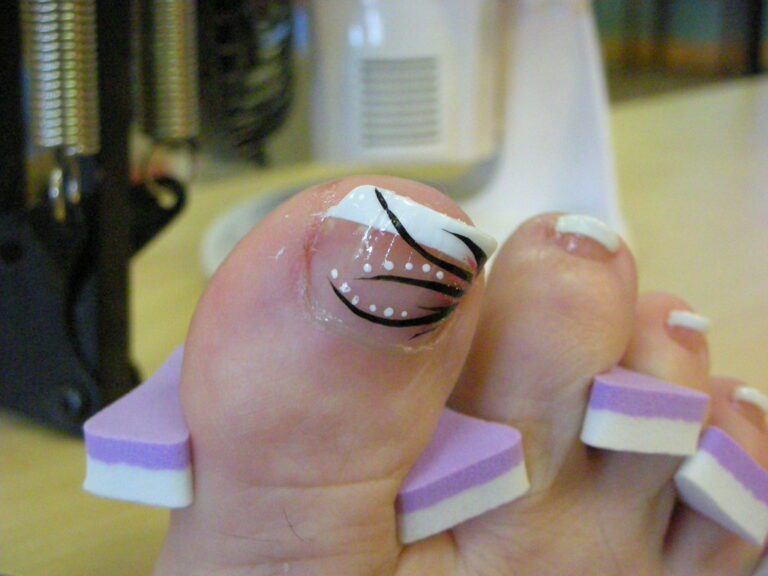“Tire Troubles: How Nails Get Into Tires Demystified”
Tire punctures caused by nails are a common inconvenience for drivers, often leading to unexpected delays and expenses. Understanding the mechanics of how nails get into tires and the preventive measures to avoid punctures can help drivers navigate road hazards more effectively. This article explores the journey of a nail from its origin to the tire, common sources of nails on roadways, preventive measures, safe driving practices, and how to respond to tire punctures.
Key Takeaways
- Regular tire inspections and maintenance are crucial for preventing nail punctures.
- Navigational strategies, such as avoiding construction zones and debris, can help minimize the risk of tire punctures.
- Technological advances in tire protection, such as run-flat tires, offer additional safety measures against punctures.
- Immediate steps after a puncture, such as pulling over to a safe location, are essential for driver and passenger safety.
- Long-term tire care post-puncture, including professional inspection and repair, is necessary to ensure continued safety and performance of the tire.
The Mechanics of Tire Punctures

Understanding Tire Structure and Vulnerability
Tire structure and vulnerability are crucial aspects of tire safety. The composition of a tire, including the rubber compounds and reinforcing materials, determines its ability to withstand punctures. Understanding the cross-sectional design of a tire reveals the areas most susceptible to penetration. For example, the tread area is particularly vulnerable to nail punctures due to its direct contact with the road surface. This vulnerability is further influenced by factors such as tire pressure, speed, and load.
The Dynamics of Nail Penetration
When a nail encounters a tire, the dynamics of penetration are governed by several factors. The angle of impact, the speed of the vehicle, and the condition of the tire’s tread all play critical roles. A nail typically penetrates a tire when it is upright and the tire rolls over it, allowing the nail to pierce through the rubber and into the inner layers.
- The angle of impact: A perpendicular approach increases the likelihood of penetration.
- Vehicle speed: Higher speeds may result in greater force, driving the nail deeper.
- Tread condition: Worn treads offer less resistance to sharp objects.
Tip: Regularly checking your tire’s tread depth can help you gauge its vulnerability to punctures. A deeper tread generally provides more protection against nails and other sharp debris.
Once a nail has breached the tire surface, it can become lodged within the structure, leading to a slow air leak or a sudden loss of pressure. Understanding the mechanics behind this can help drivers anticipate and react to the risks posed by roadway nails.
Factors Influencing Puncture Probability
Several factors come into play when considering the likelihood of a tire puncture by a nail. The tread depth of a tire is a significant determinant; shallower treads are more prone to punctures as they offer less barrier between the road and the inner structure of the tire. Tire pressure also influences puncture probability, with over-inflated or under-inflated tires being more susceptible to damage.
The condition of the roads is another critical factor. Well-maintained roads are less likely to harbor sharp objects, while those in disrepair may present a higher risk. The material composition of the tire itself can affect durability and resistance to punctures, with some compounds being more resilient than others.
Tip: Regularly checking your tire’s tread depth and maintaining proper tire pressure can significantly reduce the risk of punctures.
Driving habits should not be overlooked. Aggressive driving, such as speeding and taking corners sharply, can increase the chances of tire damage. Additionally, the frequency of driving through high-risk areas, like construction sites or poorly maintained roads, directly impacts the likelihood of encountering nails or other sharp debris.
Common Sources of Nails on Roadways

Construction Zones and Debris
Construction zones and debris are prime locations for nails to accumulate on roadways. The constant activity and movement in these areas create a conducive environment for the presence of sharp objects. Nails, screws, and other metal fragments from construction materials pose a significant risk to tires, especially when left unattended. It’s essential for drivers to exercise caution and remain vigilant when navigating through these zones to minimize the likelihood of tire punctures. Additionally, maintaining a safe distance from construction vehicles and equipment can help reduce the chances of encountering hazardous debris.
The Role of Traffic and Urban Infrastructure
Understanding the impact of traffic and urban infrastructure on the presence of nails on roadways is crucial. The density of traffic and the condition of urban roads directly influence the likelihood of encountering debris and sharp objects. Additionally, the design and maintenance of urban infrastructure play a significant role in the accumulation of road hazards. Regular inspections of roadways and strategic urban planning are essential in mitigating the risk of tire punctures caused by nails and other debris. It’s important to consider the interplay between traffic patterns and urban development in addressing this issue.
Negligence and Improper Disposal of Waste Materials
The issue of nails in tires often stems from a lack of accountability in waste management. Negligence in the proper disposal of construction materials can lead to hazardous waste, including nails, being left on roadways. This is not only a concern for vehicle safety but also reflects a broader problem of environmental stewardship.
Improper disposal of waste materials is frequently a result of inadequate enforcement of regulations or a lack of awareness about the consequences of such actions. It is crucial to understand that every nail discarded carelessly has the potential to cause a puncture.
Tip: Always report sightings of debris in public roadways to local authorities to help prevent tire punctures and maintain safer driving conditions.
To mitigate this issue, here are some recommended practices:
- Educate workers and the public on the importance of proper waste disposal.
- Implement stricter penalties for non-compliance with waste management laws.
- Encourage community clean-up events to address and remove roadway debris.
The Journey of a Nail: From Origin to Tire

Tracking Back the Nail’s Path
To understand how a nail ends up lodged in a tire, it’s essential to trace its journey from the point of origin to the moment of puncture. This path often begins at construction sites or during home repairs, where nails are commonly used and sometimes carelessly discarded. Over time, these nails find their way onto roadways, largely due to the movement of vehicles and equipment.
Transportation plays a crucial role in the dispersal of nails. Heavy machinery and construction vehicles can inadvertently carry nails away from their initial locations, dropping them onto streets and highways. Additionally, the tires of passing cars and trucks can further propel these nails, spreading them across greater distances.
Preventative measures can significantly reduce the likelihood of tire punctures. Regularly sweeping areas where nails are frequently used and properly disposing of construction waste are simple yet effective strategies. Moreover, being vigilant while driving near construction zones can help drivers avoid these hazards.
Tip: Always be aware of your surroundings when driving through or near construction areas, and reduce speed to minimize the risk of tire damage.
How Nails Spread on Streets and Highways
Nails spread on streets and highways through a combination of natural and human factors. Environmental elements such as wind, rain, and vehicular movement contribute to the dispersal of nails across road surfaces. Additionally, construction activities and improper waste disposal play a significant role in introducing nails onto roadways. The interaction of these factors creates a complex network through which nails find their way into the paths of vehicles, posing potential hazards to tires and road safety. It is essential for drivers to remain vigilant and adopt proactive measures to mitigate the risks associated with nail punctures.
The Lifecycle of Roadway Debris
The lifecycle of roadway debris like nails is a testament to the circular economy of waste materials. Initially, these items may serve a purpose in construction or manufacturing. Over time, they can become dislodged and find their way onto our streets and highways. The journey doesn’t end there, as the movement of vehicles and weather conditions can further disperse these items, increasing the likelihood of tire punctures.
Understanding the lifecycle of debris is crucial for developing effective waste management strategies. For instance, in a circular economy, the goal is to extend the life cycle of materials, minimize waste, and utilize resources more efficiently. This approach contrasts with the traditional linear model of "take-make-dispose" and can significantly reduce the presence of hazardous debris on roadways.
Tip: Regularly check areas around your vehicle for debris before driving. This simple habit can prevent tire damage and contribute to safer road conditions for everyone.
By recognizing the patterns in which nails and other debris spread, we can better anticipate and mitigate the risks they pose to our tires. It’s not just about cleaning up—it’s about rethinking our approach to material use and disposal to prevent the problem at its source.
Preventive Measures and Safe Driving Practices

Regular Tire Inspections and Maintenance
The cornerstone of tire longevity and safety is rooted in regular inspections and maintenance. By routinely checking your tires, you can identify early signs of wear and potential hazards that could lead to punctures. It’s recommended to inspect your tires at least once a month and before long trips.
Visual inspections should include looking for any embedded objects, uneven wear patterns, and checking the tread depth. Don’t forget to also check tire pressure, as improper inflation can cause premature wear and increase the risk of punctures.
Tip: Always use a reliable tire gauge to check pressure and maintain it at the manufacturer’s recommended level to ensure optimal tire performance and safety.
A simple checklist for tire maintenance might include:
- Checking tire pressure and adjusting as necessary
- Inspecting tires for cuts, bulges, or nails
- Rotating tires according to the vehicle’s maintenance schedule
- Balancing tires to prevent uneven wear
- Aligning wheels to ensure proper handling and tire longevity
Navigational Strategies to Avoid Road Hazards
When it comes to avoiding nails and other road hazards, proactive navigation is key. Drivers should remain vigilant, especially in areas prone to debris. Keeping a safe distance from the vehicle ahead allows more time to react and avoid obstacles. Additionally, awareness of one’s surroundings can significantly reduce the risk of tire punctures.
- Scan the road ahead for potential hazards.
- Adjust your speed according to road conditions.
- Use well-lit roads at night to better spot debris.
- Avoid the edges of roads where debris tends to accumulate.
Tip: Always keep an eye on the road surface, particularly in areas with heavy construction or poorly maintained infrastructure.
By implementing these strategies, drivers can minimize the likelihood of encountering tire troubles and ensure a safer journey.
Technological Advances in Tire Protection
As the quest for safer and more durable tires continues, the industry has witnessed significant technological advances in tire protection. These innovations not only enhance the longevity of tires but also contribute to safer driving conditions. One notable advancement is the development of self-sealing tires that can immediately seal punctures from nails and other sharp objects, thus maintaining tire pressure and structural integrity.
Run-flat tires represent another leap forward, allowing vehicles to continue driving for a certain distance even after a puncture. This technology provides drivers with the much-needed time to safely reach a service station or a safe location for tire replacement. Additionally, tire manufacturers are integrating sensors that monitor tire health in real-time, alerting drivers to potential issues before they lead to punctures or blowouts.
Tip: Regularly check your tire pressure monitoring system (TPMS) to ensure it’s functioning correctly, as it can be a first line of defense against tire damage.
The table below summarizes some of the key tire protection technologies and their benefits:
| Technology | Benefit |
|---|---|
| Self-Sealing Tires | Immediate sealing of punctures |
| Run-Flat Tires | Ability to drive on a flat tire for a limited distance |
| Tire Health Sensors | Early detection of potential tire issues |
Responding to Tire Punctures

Immediate Steps After a Puncture
When you experience a tire puncture, prompt and correct actions can prevent further damage and ensure your safety. The first step is to safely navigate your vehicle to a secure location, away from traffic. It’s essential to find a flat and stable surface to park your car before addressing the puncture.
- Assess the damage* to the tire. If the nail is still embedded, do not remove it as it can help plug the hole temporarily. Check for any signs of a blowout or severe tire damage. If the tire is rapidly losing air, it’s crucial to act quickly.
Here are the immediate steps to follow:
- Turn on your hazard lights to alert other drivers.
- Apply the parking brake to stabilize the vehicle.
- Locate your spare tire, jack, and lug wrench.
- Carefully remove the punctured tire and replace it with the spare.
Tip: Always keep a tire repair kit and a fully inflated spare tire in your vehicle for emergencies.
After installing the spare tire, drive cautiously to the nearest professional service center. They will determine whether the tire needs a repair or replacement. Remember, a spare tire is only a temporary solution and typically not meant for long distances or high speeds.
Repair or Replace: Making the Right Decision
When faced with a damaged tire, the choice between repair and replacement hinges on the extent and nature of the damage. Puncture size and location are critical; simple punctures in the tread area can often be repaired, while larger or more complex damage may necessitate a full replacement. Here’s a quick guide to help you decide:
- Repair if the puncture is less than 1/4 inch in diameter and located in the tread.
- Replace if the puncture is on the sidewall or shoulder of the tire, or if there are multiple punctures.
- Consider the tire’s age and tread wear; older tires or those with significant wear should be replaced.
- Assess the risk: driving on a compromised tire can jeopardize your safety.
Tip: Always consult with a tire professional to evaluate the damage and receive expert advice on the best course of action.
Ultimately, the decision to repair or replace a tire should not be taken lightly. Safety is paramount, and while a repair may be more cost-effective in the short term, it’s essential to consider the long-term implications of driving on a potentially unsafe tire.
Long-Term Tire Care Post-Puncture
After experiencing a tire puncture, it’s crucial to prioritize regular tire inspections and maintenance to ensure the long-term health of your tires. This includes checking for signs of wear, monitoring tire pressure, and addressing any issues promptly. Additionally, practicing safe driving habits can significantly contribute to the longevity of your tires. Avoiding rough terrain, sharp objects, and sudden maneuvers can help prevent further damage and extend the life of your tires. Remember, proactive care is key to maximizing the lifespan of your tires and ensuring a smooth driving experience.
When it comes to responding to tire punctures, it’s important to stay calm and take the necessary steps to address the issue. Whether it’s a small nail or a sharp object, knowing how to handle a tire puncture can save you time and money. At NAILinspire.com, we provide valuable resources and tips for handling unexpected situations like tire punctures. Visit our website to learn more about tire maintenance and get inspired with our nail art designs.
Frequently Asked Questions
How can I prevent nails from puncturing my tires?
Regular tire inspections and maintenance, avoiding construction zones, and using technological advances in tire protection can help prevent nail punctures.
What should I do immediately after discovering a nail in my tire?
After discovering a nail in your tire, it’s important to assess the damage, check tire pressure, and safely pull over to a suitable location for inspection and potential repair.
Can a punctured tire be repaired, or does it need to be replaced?
The decision to repair or replace a punctured tire depends on the size and location of the puncture, as well as the tire’s overall condition. It’s best to consult a professional for an accurate assessment.
Are there driving strategies to reduce the risk of nail punctures?
Using navigational strategies to avoid road hazards, maintaining a safe distance from construction zones, and being cautious in urban areas can reduce the risk of nail punctures.
What are the common signs of a punctured tire?
Common signs of a punctured tire include loss of tire pressure, vibration or shaking while driving, and visible damage such as a nail or foreign object embedded in the tire.
How can I care for my tires after a puncture?
After a puncture, it’s important to have the tire professionally inspected and repaired if possible. Additionally, monitoring tire pressure and overall condition regularly can help maintain tire safety and longevity.







